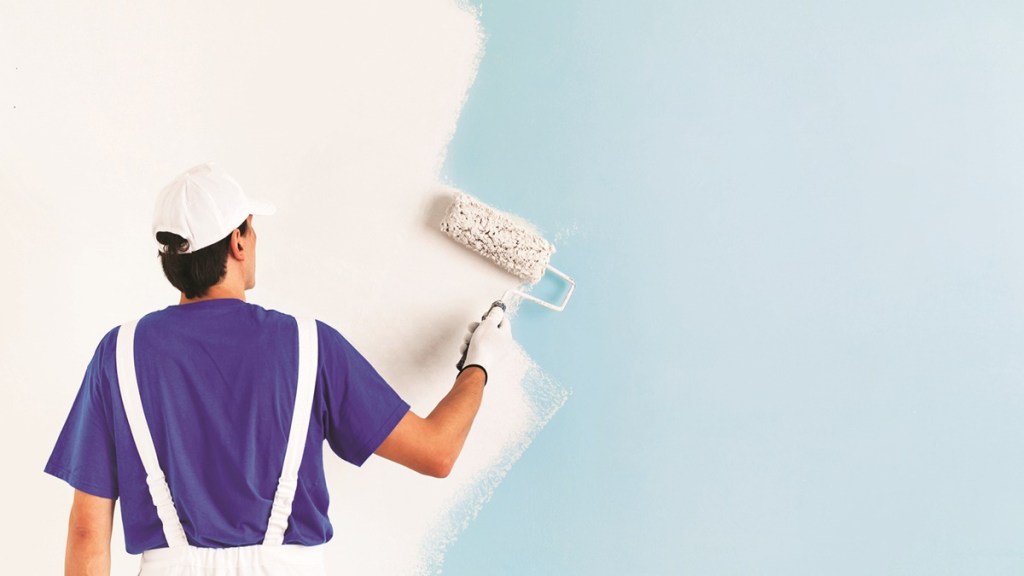Durability and aesthetic appeal have traditionally been key considerations when choosing the right brand of paint for your dream home. Thanks to recent innovation in painting and coating technology, there are now many more boxes for the consumer to check: Does that paint have microbicidal qualities? Do they have cross-linking polymers and fine pigments that make them washable? Will they “last long, really long” or compete on that quality that helped Amaron take on Indian automotive battery market leader Exide in the mid-nineties?
A low involvement category ought not to be equated with being low on innovation. Painting the house might be an outsourced job and buying such products a disengaged consumer decision, but paint makers are working hard to shake off the pandemic blues and draw consumer attention. From setting up online stores — keeping in mind the challenges of home delivering these inflammable products — to launching paints that have odour-removing properties to ones that change their shades depending on the temperature, brands are deploying technology to improve their products and supply chain, to reach consumers with the least possible hassle.
Take Nippon Paints, which recently introduced the spectrophotometer, a device based on machine learning that uses algorithms to help retailers and customers match the desired colours most accurately. It is getting ready to introduce the OxaGlazz technology, which is anti-graffiti, hydrophobic, scratch-resistant, and heat-resistant (up to 180 degrees) for the automotive segment. For Nippon Paints, such innovative offerings have started paying dividends — they contribute about 10% of the total revenue of its automotive refinishes and wood coatings business already.
On its part, JSW Paints has initiated the use of electric vehicles to transfer products from its warehouses to retailers, besides expanding the line of quick-dry, no-VOC, and no-odour paints. It is betting big on its Halo Aquaglo range, which is water-based paint for wood and metal surfaces.
For AkzoNobel India, the innovation is focused on floor coatings and the Do-It-Yourself (DIY) category in decorative paints. Rajiv Rajgopal, MD, AkzoNobel India, says that the demand buoyancy in infrastructure, power, mining and packaging sectors has propelled growth in the coatings business.
From the looks of it, after the pandemic lull, paint marketers are gearing up for the next phase of growth. According to Research and Markets, the paints industry is expected to grow at a CAGR of around 10% during FY22-25 in value terms. The market at present is pegged at over `62,000 crore with about 75% comprising architectural paints and 25% industrial paints. According to analysts, tier-I and -II cities witnessed double-digit volume growth in Q1 CY22, despite the pandemic’s aftershocks.
Expanding partner networks in small towns is high on the agenda. While JSW Paints’ current network for decorative paints boasts of 4,000-odd stores, Nippon Paints is present in more than 1,500 cities currently via its offline retail outlets, with a small part of its business coming from online channels. This channel accounts for less than one per cent of the company’s revenue at the moment and quick expansion is on the cards.
That said, paints as an industry has been particularly slow to adopt e-commerce. The reasons are not far to seek — a key factor being the nature of the product. They contain inflammable material and can be more difficult to store or move across the value chain than, say, a pair of discounted shoes. Deepak Jasani, head of retail research at HDFC Securities, says that offering home painting solutions will remain a tough call as the number of workers involved is large and controlling cost and the expertise of workers across the country is difficult.
Money matters
“Due to the steep increase in the cost of paints over last one year, there has been greater emphasis on value. Also, people are checking for the durability of the paints and thus, we expect demand for premium products to pick up this year,” says Anuradha Bose, CMO, JSW Paints. Sharad Malhotra, president, automotive refinishes and wood coatings, Nippon Paint India, says that volume growth is still muted though value growth has been quite significant because there’s a huge price escalation. “Inflationary trends are pushing up the prices and there is pressure on margins,” he says.
As per experts, the industry implemented a price increase of 24-25% in FY22.
So where will future growth come from, especially in the home painting segment? What is the potential of DIY products?
A recent report by Research Dive says the global DIY home improvement retailing market will surpass $7,84,025 million by 2027, growing at a CAGR of 3.2% from 2019 to 2027. The painting sub-segment is expected to observe highest growth notching up about $1,43,626 million by 2027, according to the same report. This is mainly due to the rising accessibility of a variety of DIY paint products such as self-painting kits.
HDFC Securities’ Jasani says he doesn’t see much scope for such products in India, at least for the immediate future. “Given the availability of cheap labour in India as compared to developed countries, we don’t see a widespread growth in the market for such products,” he sums up.

